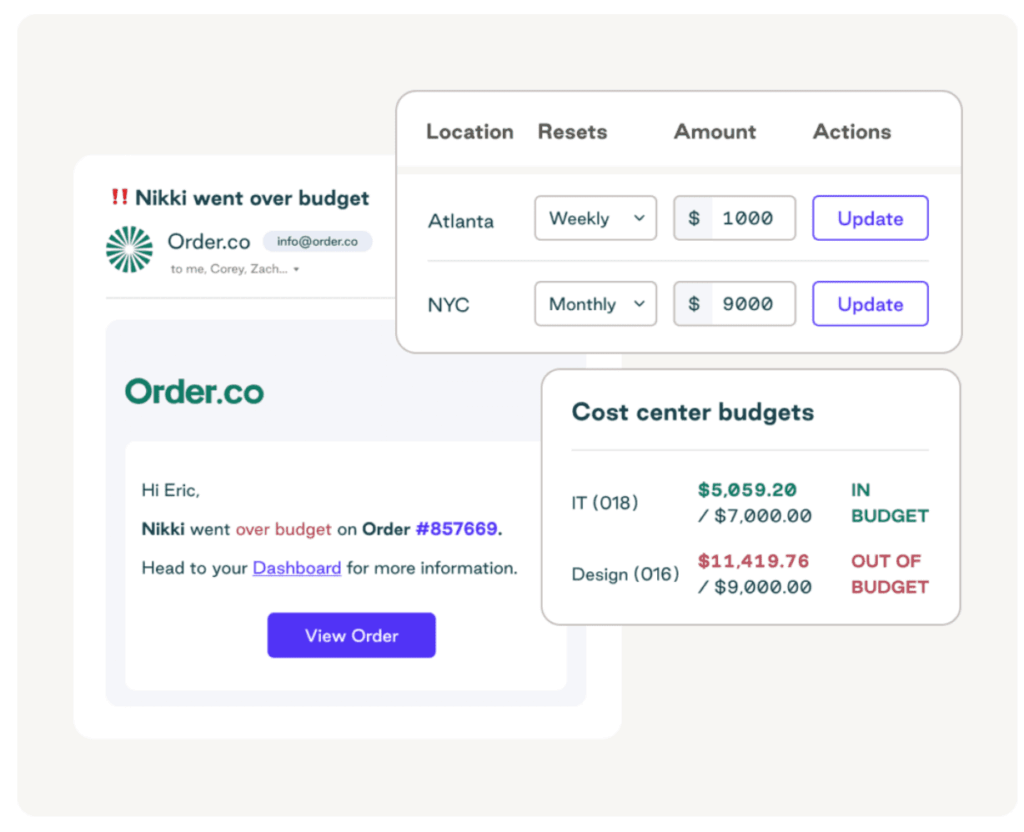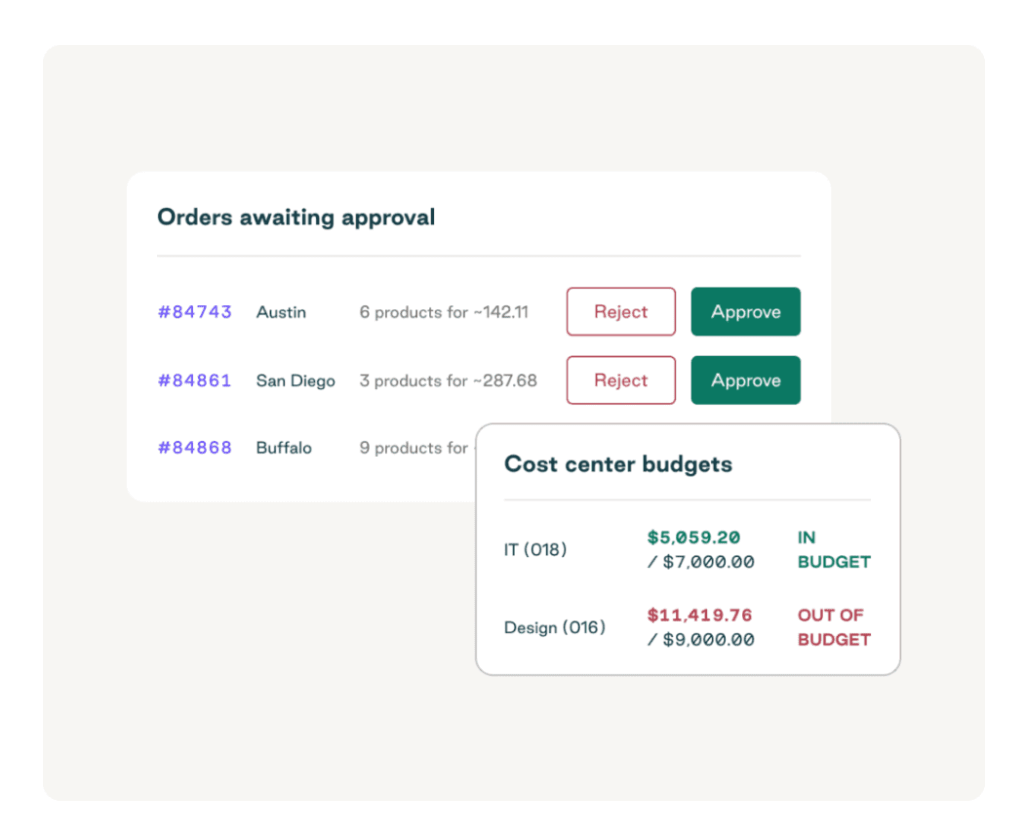The Complete Guide to Category Management Analysis

The Complete Guide to Category Management Analysis
As a procurement professional, you’re navigating rapid changes in supply chain management and inflation. That means more pressure to find cost savings, maximize profitability, and create value. In times like these, per-unit cost analysis isn’t going to get the job done quickly enough.
Organizations looking for strong performance in uncertain times are turning to bigger-picture strategies to keep prices competitive and supplier performance consistent. One proven method for boosting profitability and streamlining procurement is category management analysis.
Managing and analyzing spend by category is especially effective for large organizations that need to move quickly to realize savings. But category management analysis isn’t just for the big dogs. With the right knowledge and support, any organization can benefit.
This guide provides answers to the following common questions about category management in procurement:
- What is category management analysis?
- How is category management analysis different from strategic sourcing analysis?
- How does category management work in practice?
- What are the benefits of category management analysis?
- What challenges do companies implementing category management face?
- Which best practices are important for category management analysis?
- How does software improve category analytics?
Download the free guide: The Complete Guide to Procurement Management KPIs
What is category management analysis?
Category management analysis is the practice of grouping and analyzing spending according to product type to optimize buying decisions, simplify procurement, and increase efficiencies. It's a strategic approach that helps organizations reduce costs while maintaining product quality.
With category management insights, you can get a clearer picture of everything you buy, identify new sources of supply, and develop stronger vendor relationships. This helps you make smarter business decisions, get the most out of every dollar, and improve operational performance.
Category management analysis vs strategic sourcing analysis
Category management analysis and strategic sourcing analysis are related procurement processes, but they each have distinct goals:
- Category management helps you group similar items together to simplify and optimize your buying decisions.
- Strategic sourcing digs deeper into the cost and sourcing of each item to help you secure the best value when acquiring goods or services.
Which is best? Many procurement teams lean toward strategic and category-based sourcing over transactional methods because they reduce costs, minimize maverick spend, improve quality, and deliver greater overall value.
What are procurement categories?
Procurement categories in category management often focus on indirect spending sources like:
- Administrative and office supplies
- IT hardware and software purchasing
- Marketing materials and services
- Travel and hospitality spending
- Plant maintenance (e.g., janitorial, cleaning products)
Several direct spending categories can also benefit from categorization, including:
- Production components and raw materials
- Capital equipment, fleet trucks, and machinery
- Direct labor (e.g., temporary and contingent staffing)
Each procurement category needs a clear strategy to ensure your business gets the maximum value from its purchases.
How does category management analysis work in practice?
Companies implement category management analysis by putting dedicated teams in charge of each major spending category and using data to inform decision-making. These teams analyze spending, source suppliers, negotiate contract pricing and terms, and monitor performance metrics.
Category management analysis is part of a larger strategic process. Here’s how to start using it:
- Begin with a needs assessment to understand the products and services your business needs. Based on this data analysis, develop category strategies for managing each procurement category effectively.
- Do a spend analysis to explore historical expenditures on common categories, and use the data to create a business narrative to inform future spend, possible segmentation, and useful strategies.
- Segment your spend categories to understand their importance to mission-critical performance. Use a Kraljic Matrix to analyze the critical factors in your category management approach.
- Build a category plan and assign an internal stakeholder to manage and monitor it, ideally someone with subject-matter expertise.
- Round up input from your teams to build a strategy around each category, establish KPIs to monitor internal performance, and create an overall roadmap for achieving long- and short-term organizational goals.
Successful category management analysis can help you save time, reduce costs, and prevent cash leaks through more strategic procurement practices.
Determining category priority with a Kraljic matrix
The Kraljic matrix is an effective tool for helping organizations prioritize procurement categories. Every purchase you make falls into one of four buckets:
- Strategic items are high in both supply risk and impact on profit. They’re critical to daily business operations as well as long-term success and often involve high purchase volumes or long-term contracts.
- Leverage items have a high impact on profit but low supply risk. These are typically standard items that allow procurement teams to negotiate to maximize savings.
- Bottleneck items have low profit impact but high supply risk. These items require careful management to prevent process disruptions.
- Non-critical items have both low profit impact and supply risk. They usually require transactional oversight rather than dedicated strategic management.
By grouping products into one of these categories, you can decide which items deserve priority attention and develop strategies accordingly. This improves cost savings and resource optimization without compromising mission-critical performance.
Benefits of category management analysis

Category management analysis offers a scalable framework for achieving better outcomes. Companies that use it often see improvements in pricing and terms, product quality, and supplier performance.
Proactive purchasing: Category management analysis helps you make more informed and proactive purchasing decisions. When analyzing spend data, for example, categorization can highlight areas for potential savings, allowing you to negotiate better rates with suppliers.
Understanding how each category interacts with others can also reveal opportunities to bundle purchases or pursue strategic sourcing to take advantage of economies of scale.
Cost savings: By using past spend data to pinpoint the most cost-effective sources for products or services, category management can help your teams improve their negotiation strategies to secure better contracts.
Trends analysis: With a clear view of past spending, category interactions, and savings opportunities, you can understand and evaluate internal trends. Trend analysis also allows you to benchmark against industry prices and market dynamics, giving insight into competitors and helping you compare suppliers' products or service offerings.
Consistent quality: Category management analysis gives you better visibility into supplier performance, helping you identify which vendors consistently deliver the most valuable products and services.
For a more in-depth discussion of procurement metrics, see The Complete Guide to Procurement Management KPIs.
Common challenges to category management analysis
Despite its benefits and popularity, moving to a category-based procurement framework may initially create friction since it requires changes to your current sourcing processes. When implementing new software or systems, careful change management and ongoing communication are essential.
Here are four of the most common concerns for stakeholders when moving forward with category management:
Disruption of established supplier relationships: Your internal company stakeholders may hesitate to adopt category management due to its potential to disrupt established supplier relationships. If you’ve had long-term partnerships, they may feel understandably uneasy about changing purchasing processes—even though the goal is cost savings and improved quality.
Data quality, integration, and consistency across categories: Silos and fragmented processes often equal inconsistent and inaccurate insights. Effective category analysis unifies and organizes data from multiple systems—such as procurement, contracts, and ERP—to standardize management. This helps your teams track key metrics over consistent time frames to find process improvement opportunities.
Reluctant stakeholder buy-in: Stakeholders may prefer to stay with transactional procurement because it is a simpler process with less planning, analysis, and market research. It doesn't require as much effort and allows more autonomy in selecting vendors and supplies.
Decreased spend visibility: Consolidating individual purchases into larger spending categories can make tracking overall spend patterns and cost-effectiveness more difficult. Additionally, category management shifts the focus from individual suppliers toward overall category performance, which could impact your existing vendor relationships.
Best practices in category management strategy
Change management and cross-organization communication ease the transition from transactional procurement to a category-based approach. Try these best practices for a more successful transition and long-term process improvements.
1. Document your procurement process
A well-documented and shared process ensures all relevant stakeholders are aware of current methods, expectations, and upcoming changes. It gives buyers a clear overview of your overall procurement strategy and the specific practices and behaviors that lead to success. Documentation creates a foundation for analysis by detailing the data your team should collect and how you will measure it.
Add approval workflows, compliance requirements, and escalation procedures to build a thorough procurement process. Standardize documents, such as RFIs, RFPS, RFQs, purchase orders, and contracts, for efficiency and accessibility. This will make transparency and accountability more achievable.
2. Map out a clear category strategy
Analysis results should guide your category strategy. Clearly define the scope of each category and the types of activities to include in a category plan. Plus, double-check that the category strategy is in line with company-wide objectives and meets the needs of stakeholders across all departments.
Category plans allow you to define your values and objectives before making bigger investments. Collaborating closely with stakeholders and leaders will ensure the strategy supports your operational goals and can adapt to shifting market conditions.
For example, if you want to improve sustainability, you could prioritize sourcing from suppliers with a reputation for environmental responsibility. This targeted approach will help you integrate your sustainable procurement strategy into your purchasing decisions.
3. Get an in-depth understanding of each category
Category management relies heavily on insights into market drivers and changes. Researching market trends and competitive intelligence helps you understand pricing and available products or services. Many large organizations employ category-specific procurement professionals to drive performance in their particular areas of expertise.
For example, to improve your IT category, consider current trends like growing demand for cloud and hybrid solutions. With this knowledge, you can tailor sourcing strategies, negotiate relevant terms, and prepare for future shifts.
4. Keep an eye on supplier performance
Measuring suppliers is essential for success in any procurement approach. Analyze performance against pre-agreed service levels, pricing structures, and other quality criteria to check for compliance with contract terms. Then, use those performance metrics to start discussions with suppliers about underperformance, drive continuous improvements, and, ultimately, reduce costs.
Also, review key categories and refine strategies often to keep up with the changing market. These action steps should become part of your routine. Regular business reviews, for instance, provide dedicated opportunities for team members to discuss results and expectations for improved decision-making.
5. Monitor spend regularly

Track real-time category spending using robust spend analytics tools to identify potential overspending or missed savings opportunities. Make sure your expenses and spend performance align with the goals and KPIs established at the outset of your project. Monitor individual categories to ensure they contribute to your organization's overall cost efficiency.
6. Let software and automation do the heavy lifting
As your company scales, manual methods of tracking and managing category spend become more time-consuming and less sustainable. Using software to automate category management processes, identify trends, and ensure compliance can save you time and money as you grow.
Essential analysis features of category management software
Effective category management software should provide core features that help you automate your procurement process and view everything in a unified space. Look for software that includes:
Cross-category analysis features: Use a unified dashboard to compare performance, spend, and supply metrics across different categories. A holistic view helps break down silos so you can find key trends and interdependencies.
AI-powered analytical capabilities: Leverage AI to take care of tasks like PO creation, invoicing, and spend analysis. This lets your team focus on strategy, supplier relationship management, and cost savings.
Predictive analytics for category planning: Go beyond collecting data and get contextualized information you can act on. Customizable dashboards, robust spend analysis, and reporting features help you find saving opportunities, evaluate vendors, and match your purchases with your overall business objectives.
Data visualization and analysis dashboards: Use visual graphs, dashboards, and metrics to transform data into actionable insights. This enables better decision-making and simplifies securing leadership buy-in.
How Order.co enables better category management

Procurement software like Order.co puts powerful spend management and reporting features in the hands of category managers, financial stakeholders, and buyers. It helps ensure every purchase stays within policy and aligns with budget goals.
Order.co helps you control, report, and plan spend for better results by allowing you to:
- Build a curated catalog of items using your preferred vendors and products
- Set customizable spending limits, role-based permissions, and dynamic controls to gain total budgetary control and reduce maverick spend
- Run detailed reports to analyze spending and make data-informed decisions across every product category
- Get real-time visibility into expenses to find opportunities to improve individual category performance and overall financial efficiency
Category management works best with visibility and control over the purchasing process. Order.co helps deliver the features and functionality needed to drive category success. To see it in action, request a demo of Order.co.
Get started
Schedule a demo to see how Order.co can simplify buying for your business.
"*" indicates required fields


![7 Benefits to Building a Solid Procurement Strategy & How To Do It [2023]](https://www.order.co/wp-content/uploads/2023/04/iStock-1188425195-640x360.webp)
